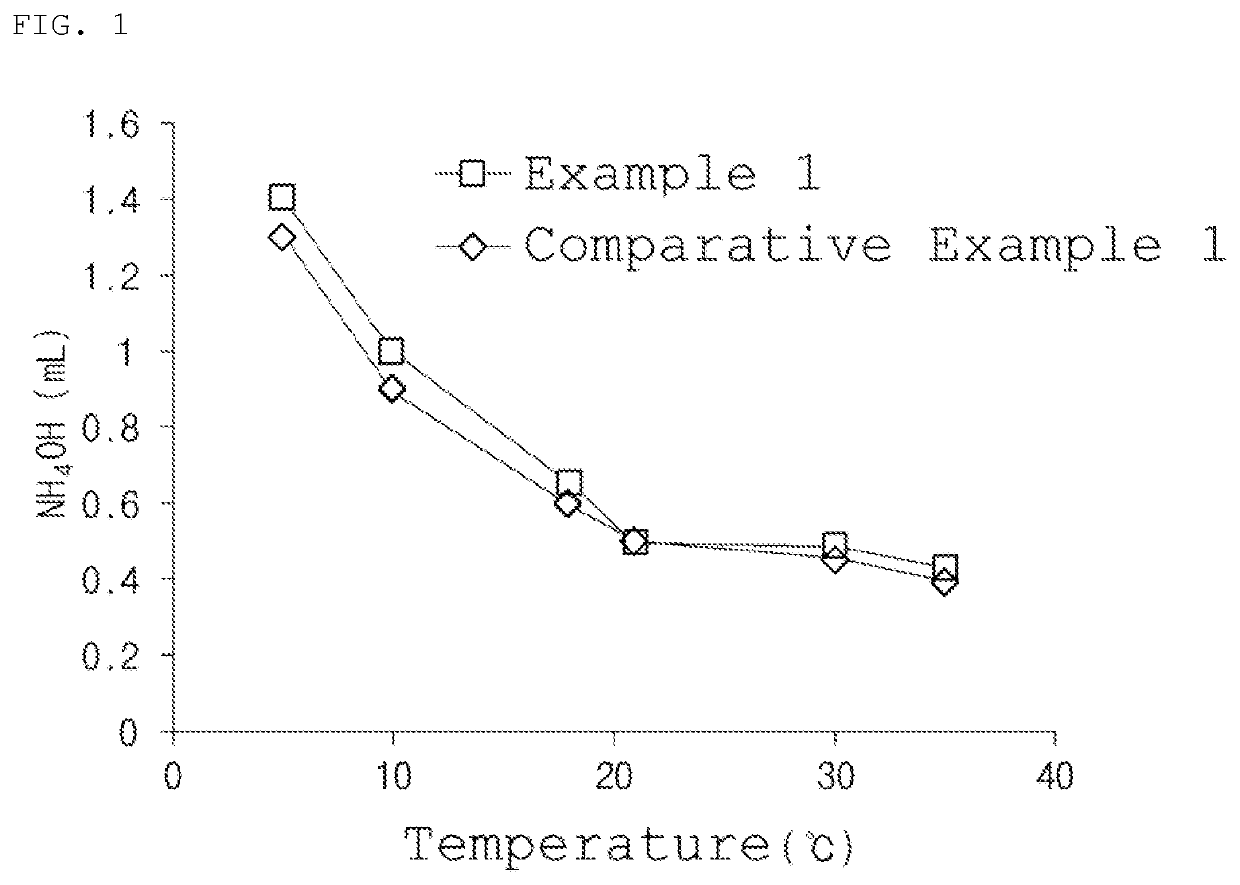Method for synthesizing pre-hydrolyzed polysilicate
a polysilicate and polysilicate technology, applied in the field of prehydrolyzed polysilicate synthesizing, can solve the problems of high energy cost, increased production cost, deterioration of process efficiency, etc., and achieves the effects of shortening the synthesis time, reducing production cost, and easy control
- Summary
- Abstract
- Description
- Claims
- Application Information
AI Technical Summary
Benefits of technology
Problems solved by technology
Method used
Image
Examples
example 1
[0079]25.0 g of ethyl polysilicate and 23.8 g of ethanol were introduced into a reactor and stirred. Thereafter, 2.3 g (HCl: 0.004 g) of a HCl aqueous solution having a pH of 1.8 was introduced into the reactor to prepare a reaction mixture. At this time, a total of 2.296 g of water was contained in the prepared reaction mixture. Stirring was performed for one hour at room temperature (20±5° C.) to partially hydrate the ethyl polysilicate and a pre-hydrolyzed ethyl polysilicate (HTEOS) oligomer, which is a final product, was collected.
example 2
[0080]A pre-hydrolyzed ethyl polysilicate (HTEOS) oligomer was synthesized in the same manner as in Example 1 except that 2.3 g (HCl: 0.005 g) of a HCl aqueous solution having a pH of 1.6 was introduced and the content of water in the prepared reaction mixture was adjusted to numerical values listed in Table 1 below.
example 3
[0081]A pre-hydrolyzed ethyl polysilicate (HTEOS) oligomer was synthesized in the same manner as in Example 1 except that 23.9 g of ethanol was introduced, 2.2 g (HCl: 0.006 g) of a HCl aqueous solution having a pH of 1.5 was introduced, and the content of water in the prepared reaction mixture was adjusted to numerical values listed in Table 1 below.
PUM
| Property | Measurement | Unit |
|---|---|---|
| pore size | aaaaa | aaaaa |
| porosity | aaaaa | aaaaa |
| specific surface area | aaaaa | aaaaa |
Abstract
Description
Claims
Application Information
 Login to View More
Login to View More - R&D
- Intellectual Property
- Life Sciences
- Materials
- Tech Scout
- Unparalleled Data Quality
- Higher Quality Content
- 60% Fewer Hallucinations
Browse by: Latest US Patents, China's latest patents, Technical Efficacy Thesaurus, Application Domain, Technology Topic, Popular Technical Reports.
© 2025 PatSnap. All rights reserved.Legal|Privacy policy|Modern Slavery Act Transparency Statement|Sitemap|About US| Contact US: help@patsnap.com

